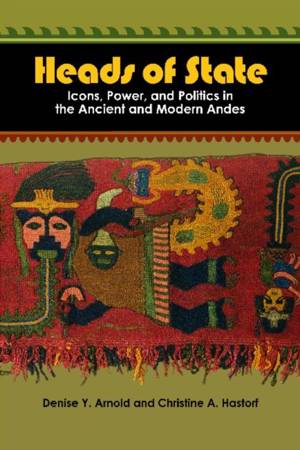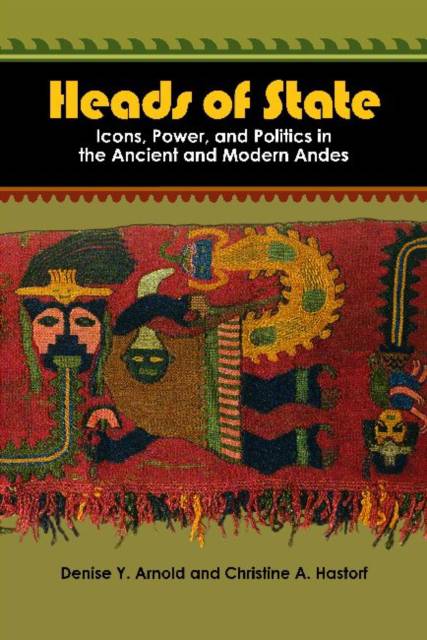
- Afhalen na 1 uur in een winkel met voorraad
- Gratis thuislevering in België vanaf € 30
- Ruim aanbod met 7 miljoen producten
- Afhalen na 1 uur in een winkel met voorraad
- Gratis thuislevering in België vanaf € 30
- Ruim aanbod met 7 miljoen producten
Zoeken
Heads of State
Icons, Power, and Politics in the Ancient and Modern Andes
Denise Y Arnold, Christine a Hastorf
Paperback | Engels
€ 59,45
+ 118 punten
Uitvoering
Omschrijving
The human head has had important political, ritual and symbolic meanings throughout Andean history. Scholars have spoken of captured and trophy heads, curated crania, symbolic flying heads, head imagery on pots and on stone, head-shaped vessels, and linguistic references to the head. In this synthesizing work, cultural anthropologist Denise Arnold and archaeologist Christine Hastorf examine the cult of heads in the Andes--past and present--to develop a theory of its place in indigenous cultural practice and its relationship to political systems. Using ethnographic and archaeological fieldwork, highland-lowland comparisons, archival documents, oral histories, and ritual texts, the authors draw from Marx, Mauss, Foucault, Assadourian, Viveiros del Castro and other theorists to show how heads shape and symbolize power, violence, fertility, identity, and economy in South American cultures.
Specificaties
Betrokkenen
- Auteur(s):
- Uitgeverij:
Inhoud
- Aantal bladzijden:
- 293
- Taal:
- Engels
Eigenschappen
- Productcode (EAN):
- 9781598741711
- Verschijningsdatum:
- 15/01/2008
- Uitvoering:
- Paperback
- Formaat:
- Trade paperback (VS)
- Afmetingen:
- 154 mm x 225 mm
- Gewicht:
- 399 g

Alleen bij Standaard Boekhandel
+ 118 punten op je klantenkaart van Standaard Boekhandel
Beoordelingen
We publiceren alleen reviews die voldoen aan de voorwaarden voor reviews. Bekijk onze voorwaarden voor reviews.











